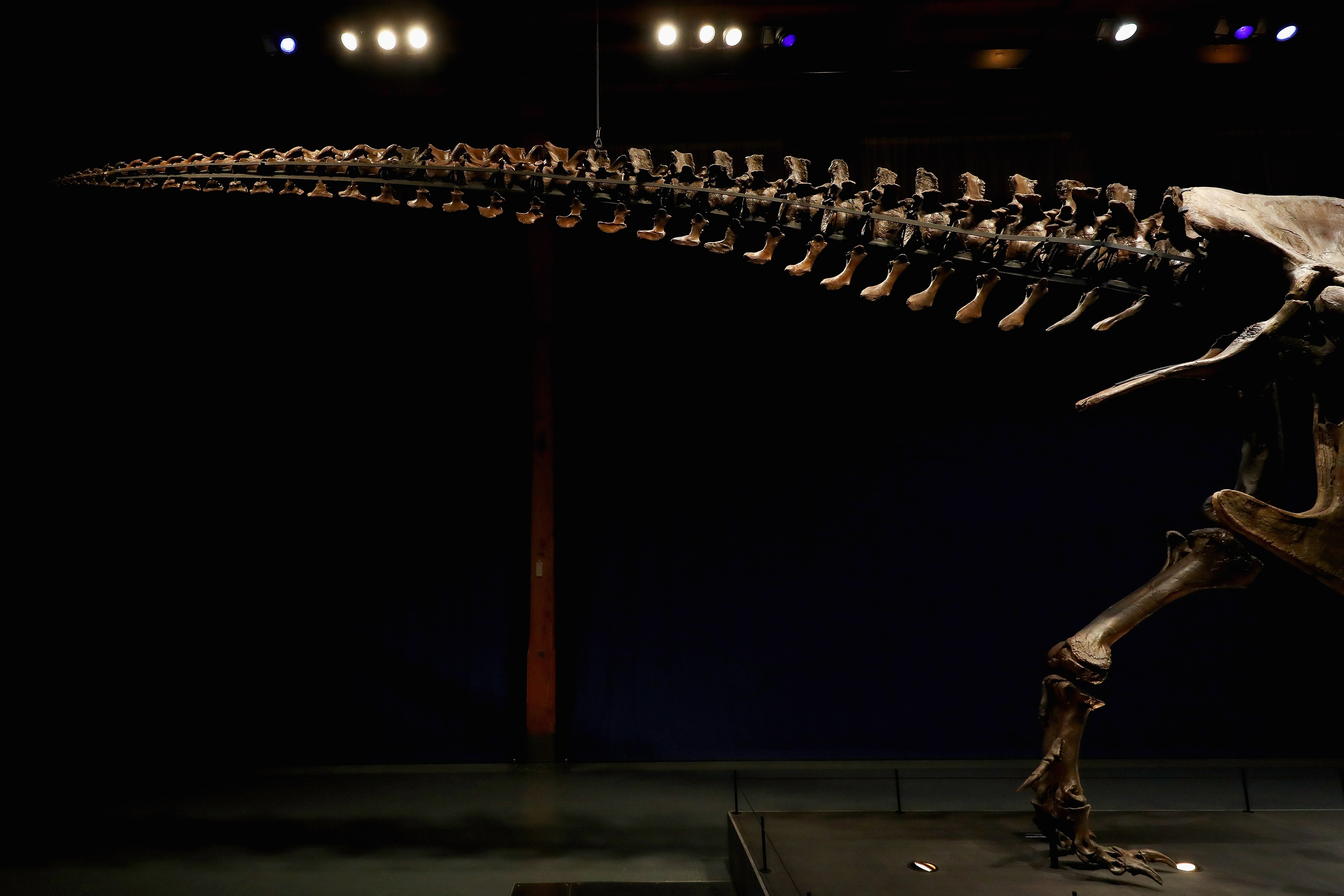Two-legged dinosaurs like T Rex wagged tails while running to stay balanced, study suggests
Findings raise questions about the potential different functions of the tail and its evolution in dinosaurs

Your support helps us to tell the story
From reproductive rights to climate change to Big Tech, The Independent is on the ground when the story is developing. Whether it's investigating the financials of Elon Musk's pro-Trump PAC or producing our latest documentary, 'The A Word', which shines a light on the American women fighting for reproductive rights, we know how important it is to parse out the facts from the messaging.
At such a critical moment in US history, we need reporters on the ground. Your donation allows us to keep sending journalists to speak to both sides of the story.
The Independent is trusted by Americans across the entire political spectrum. And unlike many other quality news outlets, we choose not to lock Americans out of our reporting and analysis with paywalls. We believe quality journalism should be available to everyone, paid for by those who can afford it.
Your support makes all the difference.Two-legged dinosaurs like the mighty T Rex wagged their tails when they ran to stay balanced, similar to how humans swing their arms while walking and running, a new study suggests.
While previous studies considered the tails of such land-dwelling dinosaurs as a static extension of the pelvis, the current three-year research, published on Wednesday in the journal Science Advances, used computer simulations to model the movement of the small carnivorous dinosaur Coelophysis which lived around 210 million years ago.
“This research gives us greater insight into how dinosaurs moved and may very well change the way we see dinosaurs depicted in films such as Jurassic Park in the future,” Queensland Museum Network CEO Jim Thompson, said in a statement.
The team of scientists, which included paleontologists, engineers, and biomechanics experts demonstrated the previously unrecognised, “crucial and 3D dynamic role” of the tail while these dinosaurs walked and ran.
“Rather than just being a static counterbalance, simulations indicate that the tail played a crucial dynamic role ... analogous to the swinging arms of humans,” the scientists wrote in the study.
“When I first saw the simulation results I was very surprised, but after running a range of further simulations making the tails heavier, lighter and even no tail at all, we were able to conclusively demonstrate that the tail wagging was a means of controlling angular momentum throughout their gait,” Peter Bishop, a research fellow at Harvard University in the US, said in a statement.
Angular momentum, the scientists explained, is the physics principle that dictates how ballerinas and figure skaters can execute pirouettes.
“Essentially, our findings show that dinosaurs like Tyrannosaurus and Velociraptor wagged their tails from side to side when they ran, which helped them stay balanced,” Dr Bishop said.
“We infer this mechanism to have existed in many other bipedal non-avian dinosaurs as well, and our methodology provides new avenues for exploring the functional diversity of dinosaur tails in the future,” the scientists wrote.
The findings spark more questions about the potential different functions of the tail and its evolution in dinosaurs.
“These cutting-edge, three-dimensional simulations show that we’ve still got much to learn about dinosaurs,” John Hutchinson, study co-author and Professor of Evolutionary Biomechanics at the Royal Veterinary College in London, said.
Join our commenting forum
Join thought-provoking conversations, follow other Independent readers and see their replies
Comments